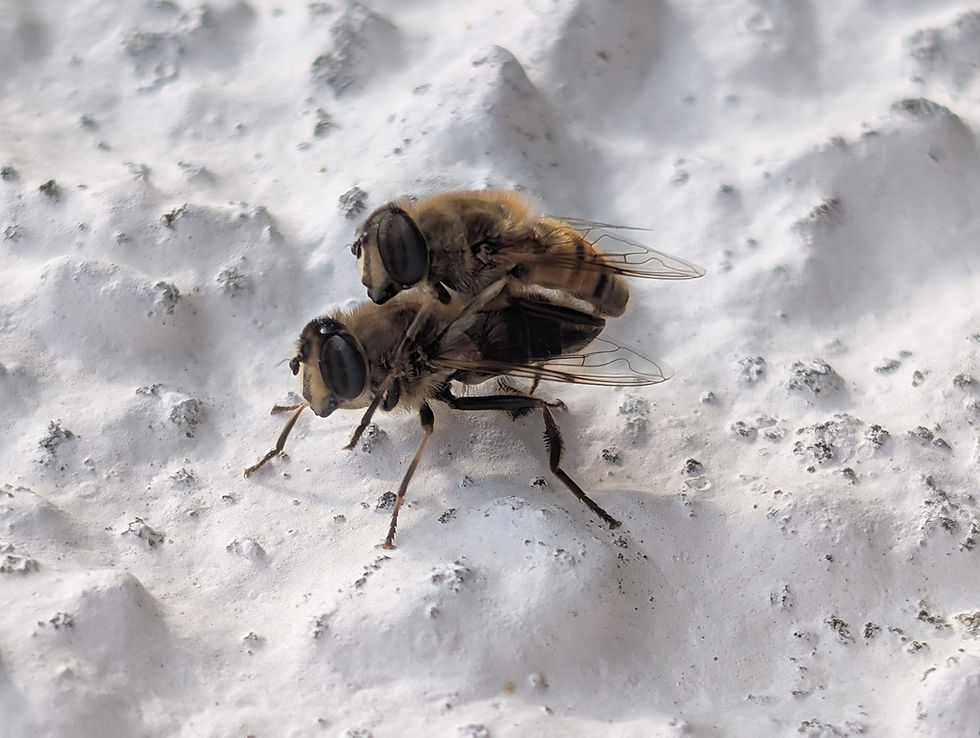The Bees and the Banais Ríghe
- @F_i_l_i

- Aug 10
- 3 min read
Updated: Aug 11

Bees are very important, we often take them for granted, poison them or otherwise bring about their destruction. Experts say that we couldn’t live for more than a few years without bees.
In the past, folklore about bees was rich.
Many people have heard of the tradition of ‘telling the bees’ when someone dies. The tradition was to update them on important news. They were seen as messengers between mankind and nature. However, something happened today that made me wonder if perhaps once we didn’t just ‘tell the bees’, but we also watched and learned from them.
I was lucky enough to see a very elusive sight... The copulation of a new Queen bee with a drone! The moon is full just now, and Lughnasadh is being celebrated at the end of a hot Summer. You might know that (without interference from artificial light), the additional light of a full moon can affect a woman’s menstrual cycle as well as the properties of herbs and other plants. My children were all born (at term) during a Gibbous moon, the time when the moon is more than half illuminated. Midwives will tell you that they’re busier during a full moon and other healthcare professionals have told me that the full moon also has a noticeable impact on mental health in-patient wards.
Honey bees mate when drones congregate at ‘Drone Congregational Areas’. The Queens go to these to find mates during their ‘nuptial flight’. How these areas are chosen is something of a mystery, except that it seems magnetic force plays a role. When drone bees are older than 6 days old, their abdomens increase in magnetite, and it is thought that this increase literally draws them to areas of increased magnetism. They return to these areas year on year - I suppose the underlying geology may play a role in creating the right magnetism.
Once she has mated with multiple drones (a process which leads to their death!), the Queen stores their semen in her abdomen, and later uses it to fertilise her eggs. Once she has returned to her hive she will never leave it again.
The bees I saw today were at Knock Iveagh, a place which in the past was the location for the ritual inaugurations of the tribe living in this area. These inauguration ceremonies are now known as the ‘Banais Ríghe’, the ceremonial marriage of Kingship. They were often held on hilltops which gave good views of the territory (this describes the Knock perfectly), and it was a symbolic marriage between the chosen leader and the sovereignty land-goddess. This ritual symbolised a different kind of copulation, one between people and the land, which, like the nuptial flight of the Queen bee, was intended to ensure the continuation of the tribe.
How did the ancients choose their inauguration places? Topography, the lay of the land, of course will have played a role. But today got me wondering about the bees… Our rich folklore about bees suggests that in the past we had a much closer relationship with these important insects, and perhaps they were seen not only as messengers, but as teachers. Finders of special places which ensure fertility.
So now I'm curious about other known inauguration sites in Ireland, and whether some of these might also be ‘Drone Congregational Areas’? Perhaps there is a PhD in it, but alas not for me!
I’ll just ask the question, with deep gratitude to the bees for letting me into their secret.




Comments